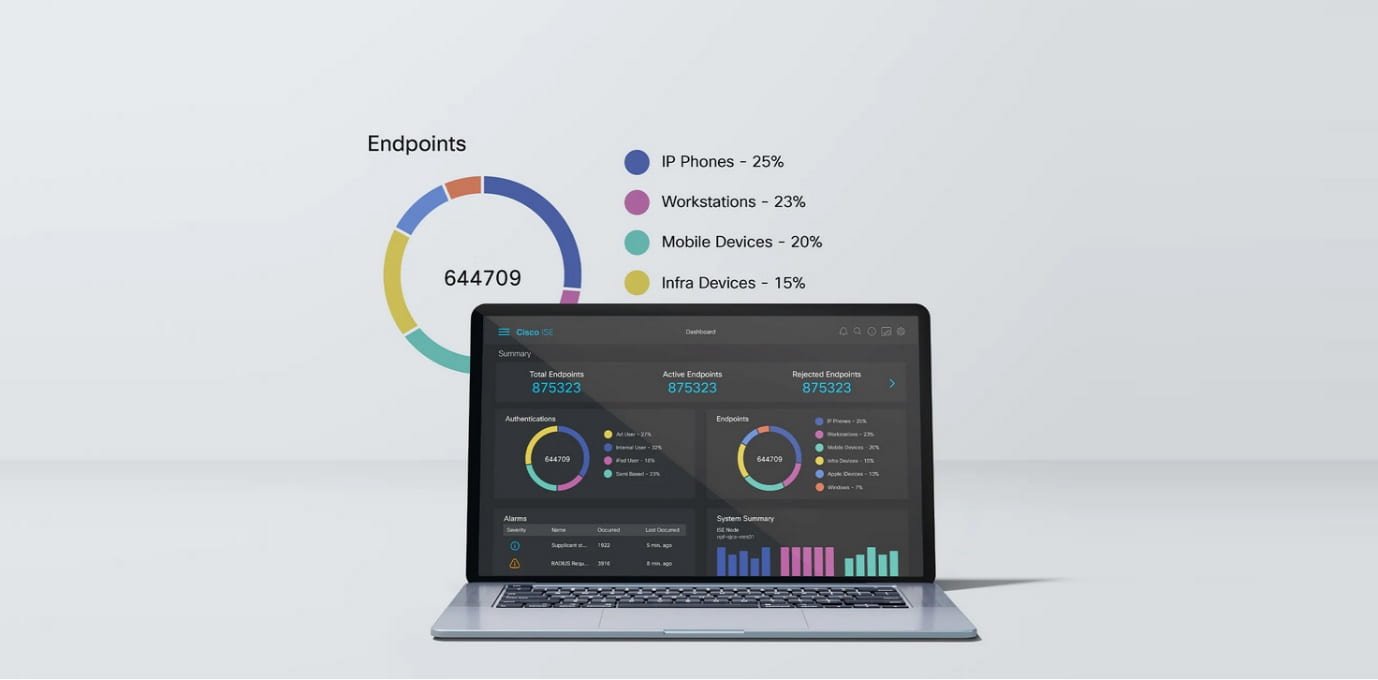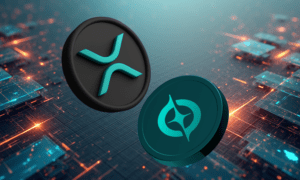As the digital landscape continues to evolve, network security has become a paramount concern for organizations of all sizes. The rapid shift to cloud computing, remote work, and the growing use of IoT devices has heightened the need for robust and dynamic security protocols. One such protocol is Network Access Control (NAC), which plays a crucial role in ensuring that only authorized users and devices gain access to sensitive networks. Cisco Identity Services Engine (ISE) is one of the leading solutions for implementing NAC. With its growing popularity, understanding Cisco ISE licensing is essential for organizations looking to leverage its full potential while staying within budget.
The Role of Network Access Control in Modern Security
Network Access Control (NAC) refers to a set of technologies and policies that manage access to network resources based on the identity of users, devices, and their security posture. NAC ensures that only authorized and compliant devices are allowed to connect to the network, helping to prevent unauthorized access and mitigate potential security threats.
With the increasing number of connected devices, particularly in IoT environments, traditional perimeter-based security models are no longer enough. NAC solutions like Cisco ISE provide a more granular level of control, offering features such as device profiling, user authentication, and posture assessment. These solutions ensure that devices meet security requirements before they can access the network, significantly reducing the risk of security breaches.
Cisco ISE: A Comprehensive NAC Solution
Cisco ISE is a comprehensive network security solution designed to provide centralized control over network access. It enables organizations to enforce policies based on user identity, device type, location, and security posture. Cisco ISE integrates with various Cisco and third-party security products, providing a scalable and flexible solution for network access control.
One of the key advantages of Cisco ISE is its ability to support both wired and wireless network environments. Whether it’s managing the access of corporate employees, contractors, or guest users, Cisco ISE allows administrators to create tailored access policies based on specific needs. These policies can be adjusted in real-time to reflect changes in the network environment, such as device compliance or user roles.
Furthermore, Cisco ISE supports multi-factor authentication (MFA), which adds an additional layer of security by requiring users to provide more than one form of verification before gaining access to the network. This is particularly important as cybercriminals are increasingly using sophisticated techniques to exploit vulnerabilities in traditional authentication methods.
Understanding Cisco ISE Licensing
Cisco ISE offers a flexible and modular licensing model that allows organizations to tailor the solution to their specific needs. The licensing structure is designed to support a wide range of deployment scenarios, from small businesses to large enterprises. To fully understand Cisco ISE licensing, it’s important to look at the key components and considerations.
Types of Cisco ISE Licenses
Cisco ISE offers several types of licenses, each designed to support different functionality and scale. The primary licenses include:
- Base License: This is the foundational license required for the Cisco ISE system to function. It includes basic features such as authentication, authorization, and accounting (AAA), as well as basic device profiling.
- Plus License: The Plus license builds on the Base license and adds advanced features such as guest management, profiling, and support for larger-scale deployments. This license is ideal for organizations with complex needs and a large number of devices to manage.
- Apex License: The Apex license is the most advanced and feature-rich option, providing capabilities such as threat intelligence, advanced reporting, and policy optimization. This license is suited for large enterprises or organizations with very complex NAC requirements.
Each of these licenses provides a different set of features and capabilities, allowing organizations to scale their deployments as needed.
License Types Based on Deployment Model
In addition to the various license tiers, Cisco ISE licensing also includes options based on deployment models. These include:
- Physical Licenses: Physical Cisco ISE appliances come with a set number of licenses that can be used to control access for a specific number of users and devices. These are typically used in on-premise environments.
- Virtual Licenses: Cisco ISE also offers virtual appliances, which are deployed in virtualized environments. Virtual licenses allow organizations to scale their deployment more easily and cost-effectively, particularly in cloud-based or hybrid environments.
- Cloud Licenses: As cloud computing continues to grow, Cisco has started offering cloud-based licensing models for Cisco ISE. This approach provides a more flexible licensing structure that aligns with the needs of modern businesses operating in multi-cloud environments.
Understanding Capacity and Scalability
When considering Cisco ISE licensing, one of the most important factors to take into account is capacity. Each license comes with a defined user and device capacity, which determines how many devices or users can be authenticated and managed by the system. Organizations must estimate their current and future needs to ensure they choose the right license and avoid potential limitations.
Scalability is another key factor in Cisco ISE licensing. As organizations grow and their network requirements evolve, they may need to scale their Cisco ISE deployment. Cisco offers several options for scaling, including adding additional appliances or upgrading to a higher-tier license. It’s important to plan for scalability from the beginning to avoid costly upgrades down the line.
Subscription vs. Perpetual Licensing
Cisco offers two main licensing models for Cisco ISE: subscription-based and perpetual licenses.
- Subscription-based licenses: With this model, organizations pay for a license over a set period (e.g., annually or multi-year). The advantage of this model is that it allows for more flexibility and alignment with the organization’s evolving needs. Additionally, subscription licenses typically include access to software updates and new features during the subscription period.
- Perpetual licenses: Perpetual licenses, on the other hand, require a one-time payment for the license, with the option to purchase support and maintenance separately. This model may be more suitable for organizations with stable network environments that do not require frequent updates or new features.
The decision between subscription and perpetual licensing depends on the organization’s budget, long-term strategy, and preference for flexibility versus upfront costs.
Trends in Cisco ISE Licensing
As organizations continue to prioritize network security, several key trends are emerging in Cisco ISE licensing:
- Cloud Adoption: The growing shift towards cloud computing is influencing Cisco ISE licensing. With more businesses moving to the cloud or adopting hybrid cloud environments, Cisco has increasingly focused on providing cloud-based licensing options. This shift allows organizations to deploy and scale their NAC solutions more efficiently while benefiting from the scalability and flexibility of the cloud.
- Subscription-based Models: The rise of subscription-based licensing is a trend that is expected to continue as organizations prefer the flexibility of paying for services on an ongoing basis. Subscription licenses align with modern IT practices, where organizations seek more agility and cost-effective options.
- Advanced Security Features: As cyber threats become more sophisticated, the demand for advanced security features such as AI-driven threat intelligence, advanced device profiling, and real-time policy optimization is on the rise. Cisco ISE licensing is increasingly focusing on adding these advanced features to higher-tier licenses, allowing organizations to enhance their security posture without overcomplicating their deployments.
- Integration with Other Security Solutions: Cisco ISE is being integrated with other security solutions, such as firewalls, intrusion prevention systems (IPS), and security information and event management (SIEM) systems. Licensing models are evolving to support these integrations, ensuring a seamless and unified approach to network security.
Conclusion
Cisco ISE is a powerful tool for organizations looking to implement robust network access control and ensure that only authorized users and devices are granted access to sensitive resources. With its flexible licensing options, Cisco ISE allows organizations to scale their deployments according to their needs, while providing essential features for managing network security.
As the demand for network security continues to rise, staying up to date with the latest trends in Cisco ISE licensing is essential. Whether an organization is operating in a traditional on-premise environment, moving to the cloud, or adopting a hybrid approach, Cisco ISE provides a comprehensive and scalable solution that aligns with modern security needs. By understanding the licensing structure and trends in Cisco ISE, organizations can make informed decisions that will help secure their networks and protect their valuable data.
By adopting a thoughtful approach to Cisco ISE licensing, businesses can not only ensure compliance but also position themselves to handle the evolving challenges of network security in a digital-first world.

































